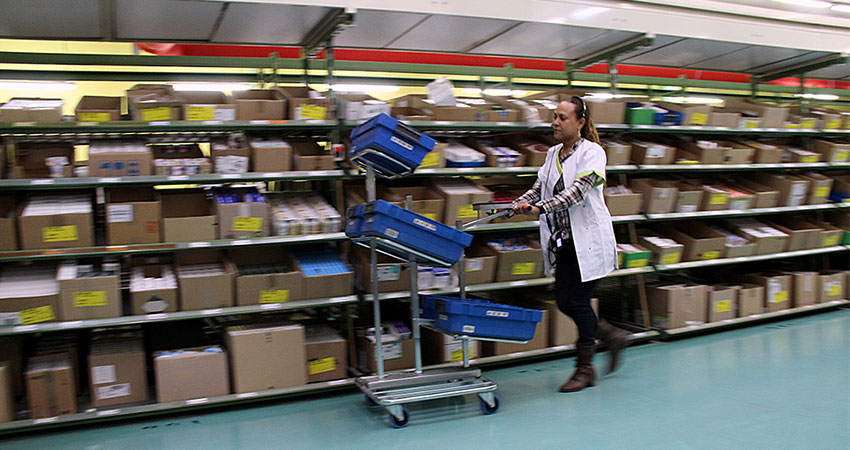As consumers demand more convenience and faster delivery from online retailers, multi-origin urban fulfillment centers are the next big trend in business. Amazon Prime, with its guarantee of two-day shipping, and the proliferation of retailers like Target and Walmart offering same-day delivery in key cities are driving customer expectations for all ecommerce merchants.
In 2017 American consumers spent $453.5 billion on the web for retail purchases, according to the U.S. Commerce Department, a 16% increase from $391 billion in 2016. And this year is on track to be even higher. By 2025, projections call for 60% of all U.S. residents to live in urban areas, putting more pressure on retailers for urban-specific quick delivery.
The shift toward speedier delivery is causing growing pains for ecommerce giants. Amazon has more than 100 million paid Prime members but was blasted during the 2017 holiday season by disgruntled customers based on shipping performance. The complaints, however, may be more indicative of rising consumer expectations than legitimate delivery issues; Rakuten Intelligence found Amazon’s shipping speeds actually improved in 2017.
While Amazon can spend $21.7 billion on shipping as it did in 2017 to meet growing customer expectations, most ecommerce sellers can’t afford to lose money and need to develop a well-thought-out strategy to address evolving demands.
Even Fulfillment by Amazon, which allows third-party sellers to expand their reach, has its drawbacks. Brands may find that they lose control of their pricing and quality control amid the sea of similar retailers.
Ecommerce entrepreneurs should consider these four factors before investing in the urban fulfillment center trend.
Startup and Inventory Costs
The thought of skipping a brick-and-mortar storefront to save money seems logical in the age of online shopping, but basic business costs still add up exponentially when considering
multiple fulfillment origins. The ecommerce world shadows the long history of small businesses, with many starting strong then failing due to diminishing resources.
Carefully calculating the range of startup costs, budgeting properly not only for website design and creation but also a solid runway of marketing expenses for the first year and not going overboard with too much inventory out of the gate can pave the road for success. Often new companies are pressured into minimum order quantities. While the cost per unit might be higher for lower quantities, having that cash in the bank or directing it toward marketing – and not paying 3PL storage while waiting for sell-through – will pay off in the long run.
Demand and Customer Acquisition
For even the largest businesses, demand forecasting is an inexact science with no hard-and-fast rules and lots of risk and uncertainty. Knowing where customers will be and choosing an urban fulfillment center in close proximity will save shipping time and expenditure. If the startup is based in San Francisco, having fulfillment in Oakland may seem reasonable, However, demand might be higher in New York, so choosing an FC in New Jersey might make more sense.
Researching competitors and understanding what they’re spending on customer acquisition, while properly determining future demand or sales prospects can also lessen problems down the line. Having a sufficient budget on pay per click, social media and influencers relative to competitors, and knowing where to spend it geographically is key to success. “If you build a site, they will come” doesn’t work in 2018.
Understanding the geographical and seasonal demands of inventory, and where to allocate
advertising expenditure is important. Other factors like climate can shift regional demand, especially for apparel retailers carrying seasonal items. Swimwear likely sells steadily year-round in California and Florida but gets a strong bump in early summer in other parts of the country. Although a fulfillment center in one of those areas might meet your needs most of the year, having a sole FC in the Northeast will get you closer to the overall customer base year-round, reducing shipping expenses. At the end of the day, the best measure for forecasting future demand is sales history.
Data Analysis
Data collection is key to demand forecasting. All business decisions should be made with some analysis, especially of historical data. Having at least a year of tracked sales can give a solid foundation for predicting how a growing ecommerce site will behave in the future.
Keeping track of demographic and behavioral customer data is essential. Capturing and analyzing it will help refine your business model.
Inventory Control
In the age of Amazon, having an infinite number of choices seems like the key to capturing online shoppers. Although it might seem counter-intuitive, a limited number of SKUs will likely help a business grow.
Offering too many choices can be confusing for customers and create order fulfillment headaches. More inventory means more storage space and carrying excess inventory is never good for the bottom line. Every item sitting on an FC shelf is money invested with no current return.
A general rule of thumb is that 80% of sales comes from 20% of your SKUs. The more products, the more capital needed to maintain stock, especially if it’s spread out over multiple FCs. An efficient urban fulfillment center relies on businesses with a limited number of SKUs. Think niche rather than supermarket.
Doing the homework on product demand, who is the customer, where they are, what traction competitors are getting and what it’s costing them to acquire customers will pay off in the long run.
The big question is, “How well do you really know your business?” Making the leap to using an urban fulfillment center needs to be well-thought-out. Multi-location fulfillment requires an investment of resources, including capital and inventory.
Powerhouses like Amazon, Walmart and Target have defined the ecommerce landscape, including the urban FC center model. Multi-origin fulfillment has created new challenges for startup ecommerce sellers and small businesses alike. The decision to invest in an urban fulfillment center model is one that should not be made overnight.
Brendan Heegan is the Founder of Boxzooka

